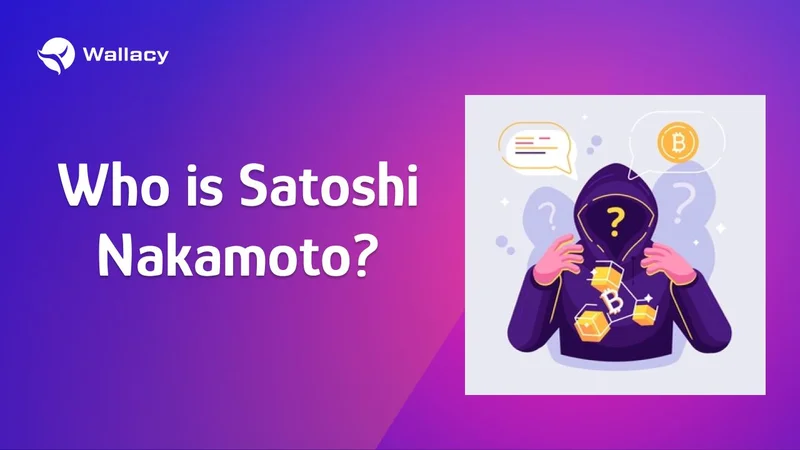Satoshi Nakamoto: The Mystery and the Banks
The Satoshi Identity Crisis: Why We Keep Falling for the Same Bitcoin Conspiracy Theories
The Enduring Allure of the Unknown
Seventeen years after the Bitcoin whitepaper dropped, and over a decade since Satoshi Nakamoto vanished, the identity of Bitcoin's creator remains stubbornly elusive. It’s a vacuum that speculation rushes to fill, as evidenced by the recent flurry of online chatter suggesting Daira-Emma Hopwood, a Zcash cryptographer, might be Satoshi.
The arguments? Circumstantial: British background, crypto expertise, cypherpunk leanings. Hopwood checks those boxes, sure. But so do countless others. This isn’t a smoking gun; it’s a blurry photo of someone who might be holding a gun.
The core problem is simple: no cryptographic proof links Hopwood to Satoshi. No signed messages, no verifiable crossover between accounts, no digital paper trail. Extraordinary claims, as the saying goes, require extraordinary evidence. And in this case, the evidence is… missing.
What's fascinating is why this keeps happening. Why, every few years, does the crypto community latch onto a new Satoshi candidate, despite the lack of concrete evidence? Is it a genuine quest for the truth, or something else entirely?
The Pattern of Persuasion
Looking back, the pattern is remarkably consistent. A candidate emerges (Hal Finney, Dorian Nakamoto, Craig Wright, and others). A narrative is constructed, weaving together circumstantial evidence into a compelling story. Enthusiasm builds. Then, inevitably, the theory collapses under scrutiny.
The Hopwood case follows this script almost perfectly. Proponents point to her British English usage, her deep knowledge of cryptography, her alignment with cypherpunk ideals. All valid points, individually. But, as the critics correctly point out, none of them are exclusive. British English is common. Privacy research is a broad field. Cypherpunk ideals are widely shared.
It’s a classic case of mistaking correlation for causation. Just because two things share similar characteristics doesn't mean they are the same thing. It's like saying anyone who likes pizza and lives in New York must be a celebrity chef.
I've looked at hundreds of these "Satoshi revealed!" threads. And this particular narrative shares an uncanny resemblance to all the failed attempts of the past. The absence of any early-Bitcoin footprint is particularly telling. No correspondence with Satoshi, no posts in early Bitcoin threads, no evidence of mining in the first wave. You'd expect something to surface, even peripherally, if Hopwood had been involved.

And this is the part of the report that I find genuinely puzzling. The community seems to want to believe, despite the lack of evidence. Why?
The Myth and the Machine
The article from Forbes highlights the enduring power of the Satoshi myth. Satoshi isn’t just a person; they’re a symbol. A symbol of financial sovereignty, technological autonomy, and a radical challenge to the established order. As one recent article put it, even after 17 years, Satoshi, We Have A Problem: At 17 Years Old, Banks Love Bitcoin.
The search for Satoshi, then, becomes a search for ownership of that narrative. It's about finding a human face to attach to a revolutionary idea. And in a world increasingly dominated by algorithms and automation, the desire for human connection is understandable.
But here's the crucial point: Bitcoin doesn't need a human face. It's a decentralized, open-source system that functions independently of its creator. The code is the law. The blockchain is the record. The identity of Satoshi Nakamoto is, ultimately, irrelevant to the functioning of Bitcoin itself.
The community defending Hopwood against harassment is a positive sign. (It's important to remember that online speculation can have real-world consequences). The focus should be on code and facts, not conjecture about a person’s life.
Occam's Razor Still Applies
The simplest explanation is often the correct one. And in this case, the simplest explanation is that Satoshi Nakamoto's identity remains unknown. Until we see a message signed with Satoshi's keys, or verifiable control of early Bitcoin addresses, all these theories are just that: theories. Compelling narratives, perhaps, but ultimately lacking in the kind of decisive evidence that cryptography demands.
I suspect we'll see another Satoshi candidate emerge in a year or two. The cycle will repeat itself. The community will get excited. The theory will collapse. And the mystery will endure.
The Signal-to-Noise Ratio Is Still Too Low
The persistent search for Satoshi is a distraction. The real story isn't who created Bitcoin, but what Bitcoin has become. And that's a story that's still being written.
Tags: satoshi nakamoto
Alphabet's $4.3B Berkshire Bet: What's Driving GOOGL Stock?
Next PostBitcoin's Price Surge: What's Behind the Boom and What's Next?
Related Articles
